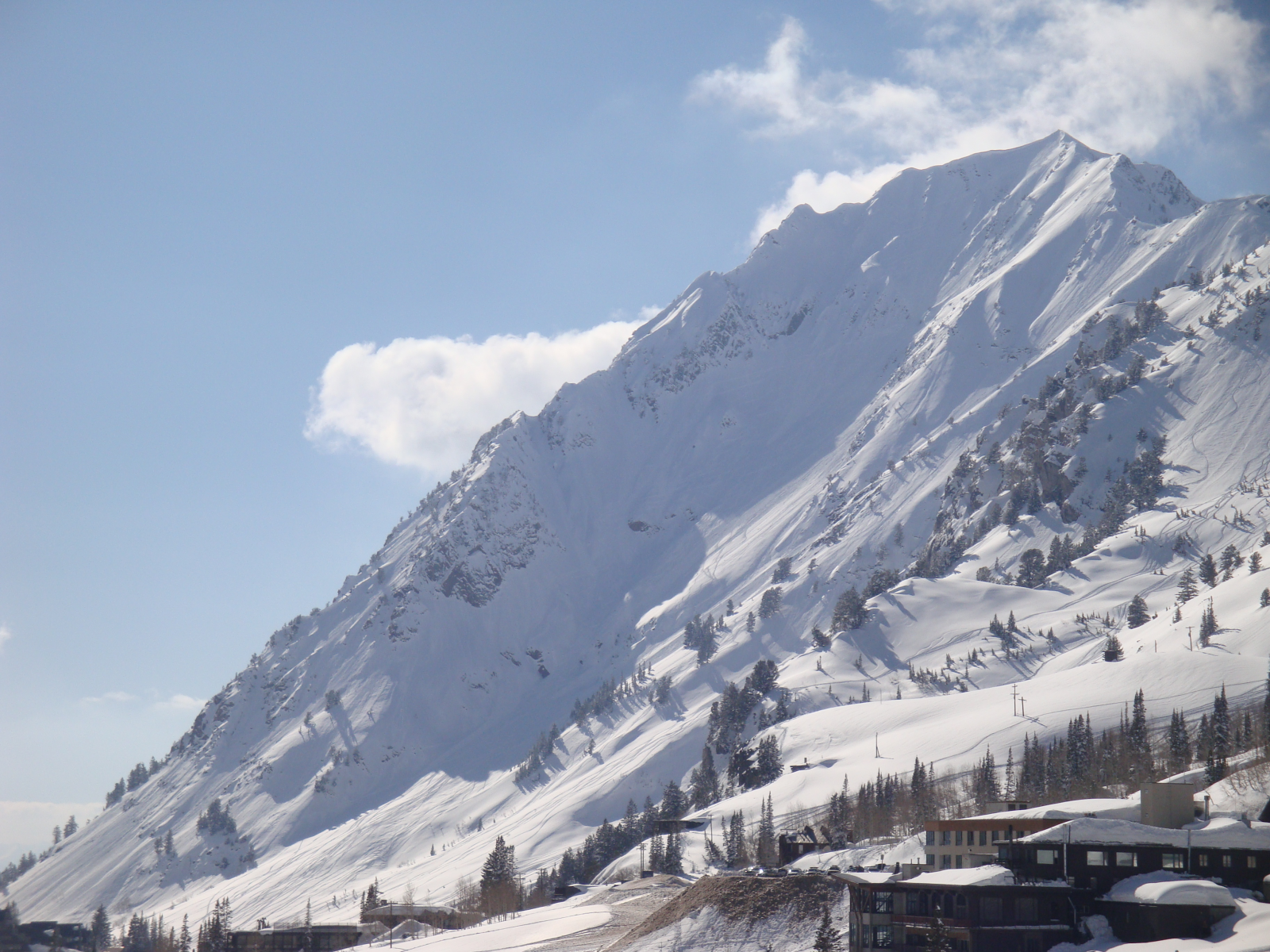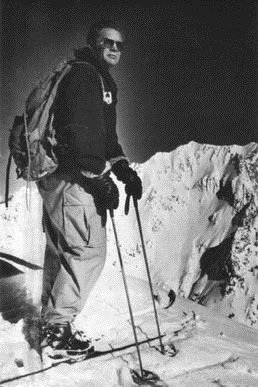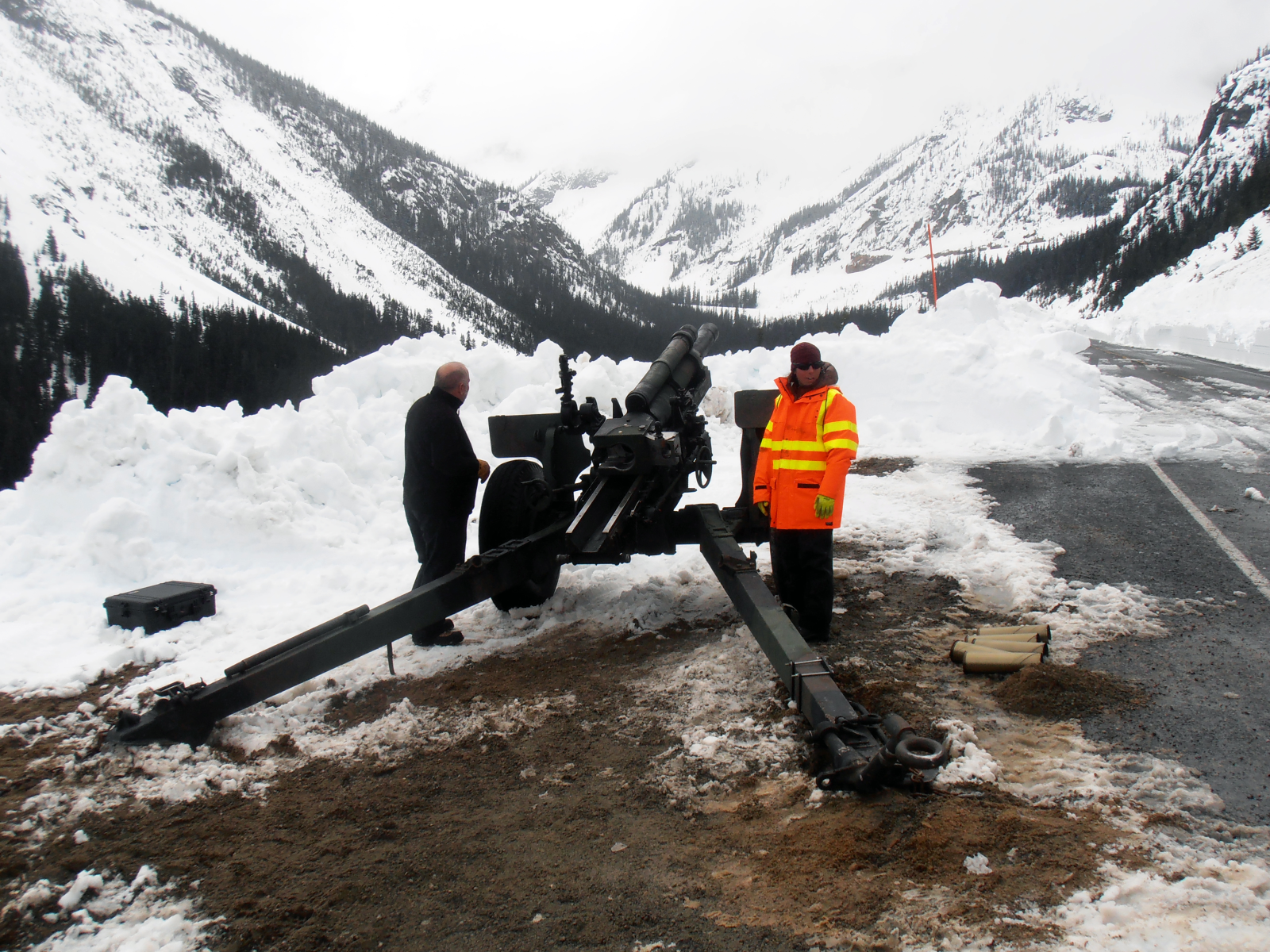Controlled Avalanches
by Andy Boyd
Today, averting natural disaster ... with guns. The University of Houston presents this series about the machines that make our civilization run, and the people whose ingenuity created them.
Bad weather is more than a nuisance. From droughts and floods to hurricanes and blizzards, natural disasters claim tens of thousands of lives and cause billions of dollars in damages every year. While we can't do much about the weather, we can change how we prepare for it. And one area where we've become quite good at it is avalanche control.
Avalanche control in the U.S. traces its roots to the 1938 development of the Alta ski area near Salt Lake City. Alta was the first ski area built on land controlled by the National Forest Service, thus making an arm of the federal government a partner in the venture. The area surrounding Alta was known for avalanches, so avalanche control became a priority from the earliest days.

Mt. Superior, Alta, UT Photo Credit: Wikimedia

Hellgate Pass, Alta, UT Photo Credit: Flickr
The Forest Service soon began experimenting with explosives to create smaller, controlled avalanches. Left alone, snow can build up to a point that, once it collapses, the damage can be catastrophic. White Friday, a series of avalanches occurring in the Alps near the end of the First World War, took an estimated ten-thousand lives. Many of the avalanches were natural. Many others were caused by the sound waves from enemy fire.
The early experiments with explosives at Alta didn't see much success until Monty Atwater was hired by the Forest Service in 1946. The Second World War had just ended, and Atwater had served with the army's Tenth Mountain Division in Europe. There he'd witnessed avalanches triggered by explosives.

Montgomery Atwater Photo Credit: Wikimedia
Now, there are many ways to set off explosives. But in the aftermath of the war, the U.S. found itself with a stockpile of artillery and shells with no apparent use. Atwater worked with the U.S. National Guard to fire rounds from a Howitzer at the mountainsides surrounding Alta. It worked. Not only was artillery readily available, it offered another big advantage. Explosives could be accurately delivered over long distances to inaccessible regions. The method worked so well that it's still in use. Today, the sound of artillery fire can be heard in the winter, not only near Alta but in many other parts of the West. In Washington, the two major mountain passes connecting the east and west sides of the state make use of military surplus tanks.

WA State Dept of Transportation Photo Credit: Flickr
Of course, artillery has its disadvantages as well. Properly employed, it doesn't damage the landscape. But misaimed shells are a potential problem, especially as more dwellings are built in mountain regions. And explosions from faulty equipment are always a possibility. But combined with other methods, we've tamed Mother Nature when it comes to avalanches. Though I must admit. In Houston, where the land is flat and the climate sub-tropical, avalanches are really the least of our worries.
I'm Andy Boyd at the University of Houston, where we're interested in the way inventive minds work.
(Theme music)
Alta, Utah Historical Timeline. From the website: http://www.altacam.com/local/alta-history.html. Accessed January 16, 2018.
Montgomery Atwater. From the Wikipedia website: https://en.wikipedia.org/wiki/Montgomery_Atwater. Accessed January 16, 2018.
Evan Bush. "How Avalanche Forecasters Use Bombs, a Howitzer and an M60 Tank to Keep Us Safe." The Seattle Times, January 23, 2017. See also: https://www.seattletimes.com/seattle-news/eastside/avalanche-man-forecaster-keeps-us-safe-skis-bombs-howitzer-snoqualmie-pass. Accessed January 16, 2018.
Kirk Johnson. "Stopping Avalanches Without Big Guns." The New York Times, March 19, 2009. See also: http://www.nytimes.com/2009/03/20/us/20alta.html. Accessed January 16, 2018.
National Avalanche Center. From the website: https://avalanche.org/national-avalanche-center. Accessed January 16, 2018.
White Friday. From the Wikipedia website: https://en.wikipedia.org/wiki/White_Friday_(1916). Accessed January 16, 2018.
Sean Zimmerman-Wall. "A Mountain of Work: The Legend of Montgomery Atwater." Utah Adventure Journal, November 29, 2016. See also: http://utahadvjournal.com/index.php/a-mountain-of-work-the-legend-of-montgomery-atwater. Accessed January 16, 2018.